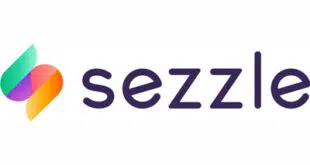Pay by bank is not a new electronic-payments concept—consumers have been paying utility bills with their bank accounts for years—but the promise of lower fees and reduced merchant headaches is energizing the service, and work is at hand developing new use cases.
Witness Radial Inc., an e-commerce platform adopting Link Money’s pay by bank tech and J.P. Morgan Payments 2023 launch of a pay by bank service. Now, Fiserv Inc., the big Milwaukee-based processor, is touting the benefits of pay by bank. Notably, this effort is positioned as a companion to other digital payment methods, such as credit and debit cards.
Pay by bank is a combination of old payment technology and new technology to create a new customer experience, Chris Rennie, director of product management at Carat from Fiserv, tells Digital Transactions News. “The ability to do account-to-account payments has been around a long time,” he says. Pay by bank is the ability to expose that experience in a prominent way digitally, pair it with more modern user interface schemes, take advantage of modern card-on-file tech, and create a new experience, he says.

The benefits of pay by bank lie in its lower processing costs, reduced risk, and better experiences for consumers, Fiserv says.
Current pay by bank incarnations use the automated clearing house system, which, according to open banking specialist Plaid Inc., may have a fee ranging from pennies for smaller transactions up to 1% to 1.5%, often with a $5 cap. That compares to a credit card processing fee typically ranging from 1.5% to 3.5%. Fiserv says pay by bank can be up to 50% less in fees.
“It’s really about enabling merchants to accept this tender and get the lower cost and opportunity to consumers,” Rennie says. Indeed, merchants have been complaining about credit and debit card acceptance costs for years, with a 19-year-old interchange lawsuit reaching a settlement recently, though official acceptance is pending.
The task for pay by bank advocates will feature educating merchants and consumers, Rennie says, as many Fiserv surveys indicate consumers are just not aware of it. Merchants could help by extending a promotion if a consumer uses pay by bank at their stores or e-commerce sites.
Some use cases are already deployed. Gasoline retailers offer a discount if a consumer enrolls in an ACH-based payment method. Cumberland Farms, a Northeastern convenience-store chain, offers Smart Pay, and truck-stop chain Love’s offers a 10-cent discount per gallon when paying for fuel with its app.
“It is the merchant tender and they are able to leverage the consumer to drive that behavior,” Rennie says.
Pay by bank, at least through Fiserv, can reduce merchants’ risk of chargebacks. Fiserv guarantees all ACH transactions on its platform. There could be issues with services or goods not provided, but merchants and consumers have mechanisms, such as reaching out to the merchant or the bank, to help resolve them, Rennie says.
Fiserv is not alone in pursuing pay by bank options. Chief competitor FIS Inc. earlier this year said it is working with open-banking provider Banked to develop new pay by bank services. Fiserv has been working with MX Technologies Inc. and its data aggregation service since 2022. The card brands, too, are courting the possibilities of pay by bank, though that might appear counterintuitive. Indeed, Mastercard Inc. and Visa Inc. have made open banking a key component of their strategies.





